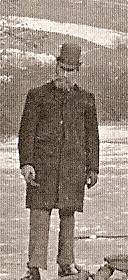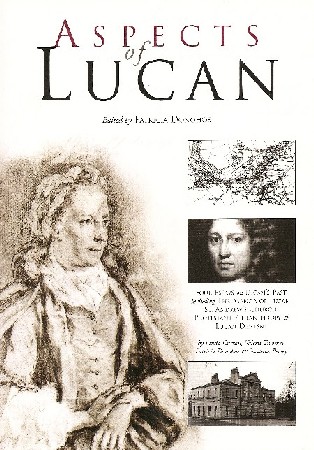|
<< Back to the main Local History page
Back in the 19th century, we had no such thing in Lucan as Community or Planning Councils. Such matters were probably the least of their worries back then.
However, there was a group emanating from the Church of Ireland Parish, which did have certain civil responsibilities towards the poor of the area. It appointed officers for health and the care of deserted children, and the provision of coffins for paupers, regardless of religious affiliation.
Letters, bills and receipts dating from the 1820s, give an insight into the hardships experienced by the poor of the parish.
Funds came from the collections taken at Sunday morning and evening services, which were put into an account for those most in need.
Large quantities of coal, turf, oat and wheat meal were purchased on a weekly basis for distribution to the needy.
1824 - Clothing was provided on a regular basis. In 1824 complete outfits were ordered for "three poor women belonging to the Church of Lucan". The women, Mrs. Sheeran, Mrs. Pointon and Mrs Reed were all widows. These outfits were ordered by Emily Vesey and comprised of calico gowns, check aprons, linen shifts, petticoats, stockings, flannel waistcoats and muslin caps. Three shawls were also ordered at a cost of 2s 6d each. The cost of material and making all of the above amounted to €3.15s.7d. Shoes were provided at a cost of 19s 6d for three pairs. All were paid for out of poor fund.
1825 – another 3 women were dressed, and in 1828, Maria Kingston ordered 17 cloaks for the poor. Men were also provided with clothing. 4s 6d was the cost of one large suit and 3s for one small suit in 1828.
January 1831 – 18 blankets, 15 cloaks and 6 great coats were distributed to the poor.
In 1828 Rev. Ould writing o behalf of Sally McNamara, describes her as an "extremely poor and very deserving creature who has been fourteen years living in this parish and had never received any parochial assistance whatever". Rev. Ould requested that she be given half a crown for the present and if possible that she be put on church poor list, adding that she is a R.C.
Another letter seeking assistance reads: "The bearer's wife Ann Murphy is lying ill in a cabin on the Lucan Road & is quite destitute of nourishment or drink.
In 1835, the Roman Catholic priest in Lucan announced that his community no longer wanted Protestant aid. Thereafter, Lucan parish only helped Protestant poor.
Note: 1835 was the year the foundation stone was laid for St. Mary's R.C. Church.
Lucan Mutual Improvement Association
By 1890, men of the Church of Ireland parish instigated the Lucan Mutual Improvement Association.
Subjects discussed were tobacco and opium smoking, total abstinence versus moderation, strikes, socialism, free trade, poverty education, divorce……

1896 – John Woodward Stanford (above) addressed the meeting with a paper which posed the question 'is it in our power as an association to do more for the improvement of the moral and social life of Lucan? Stanford suggested that improvement should include the lighting of the village, and that a reading room, gymnasium, co-operative store, a band and possible a guild, could be provided, the later 'so that boys leaving school and passing into manhood might be well looked after'.
A meeting was devoted to discussion on the feasibility of lighting in the village – it was felt that street lighting in the long winter evenings would be desirable and it was decided after a heated discussion that a committee should be formed which would consult with 'leading gentlemen of the neighbourhood including Roman Catholics, to take such further steps as may be decided upon'.

Some other items suggested by Stanford were also favourable. Joseph Shackleton (above) approved of a gymnasium being provided but thought that the notion of a co-operative store would be a nonsense in Lucan, as was a suggestion of wash-houses when there was the river Liffey at hand.
In the latter half of 19th century, the vestry of Lucan parish complained on many occasions both to local businessmen and to Celbridge board of guardians about conditions in Lucan Village.
In 1887, Hills Mills were responsible for diverting the current of the River Liffey so as to strike the south or parsonage bank. Objection was made to this and also to the nuisance caused by the erection of a privy overhanging the river and to the pollutions possibly connected as the diversion of the current probably caused the effluent from the privy to be washed up on the vestry grounds, which swept down to the river at that point. The matter was satisfactorily resolved three months later when the mill owners resolved to move the privy and to 'shut the same with timber to the bottom'.
Note: the Parsonage Bank would have been the where the Old Rectory houses are now – it was formerly the site of the Church of Ireland Rectory.
In 1887, a complaint was made about the condition of the Old Hill road (now Chapel Hill), and an open sewer in the Village.
In 1893 the vestry discussed the 'extremely unsanitary conditions of some houses in Lucan'
1897 –They discussed the 'shamefully defective water supply to the town', and of the necessity for lighting the streets.
Although it was 1897 when street lighting was discussed, it was July 1910 - when gas lighting came to the St. Andrew's Church site, and some 7 years later 1917 – electricity came to Lucan Village when Lucan Tram Company got permission to erect poles for electric light wires.
This article has been gleaned from Aspects of Lucan - Curran, Twomey, Donohoe & Pegley.

The publication contains four essays on Lucan's past, and can be purchased at:
Carey's Newsagents, Main Street, Lucan
Abtree Books, Superquinn Shopping Centre, Lucan
The Book Circle, Main Street, Leixlip
Or
smpegley@eircom.net for details.
Mary Mulhall
(Photos from Lucan & Lucanians).
|

